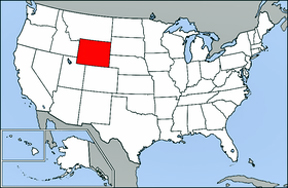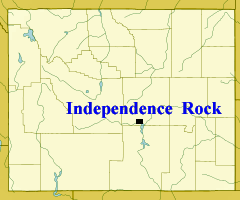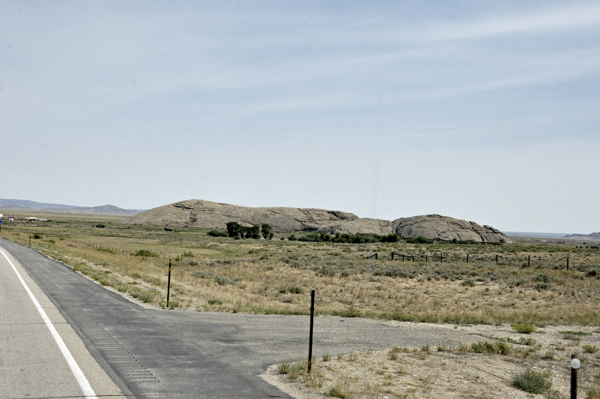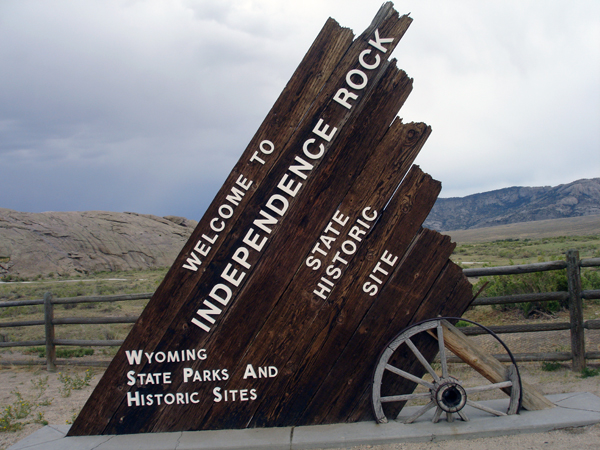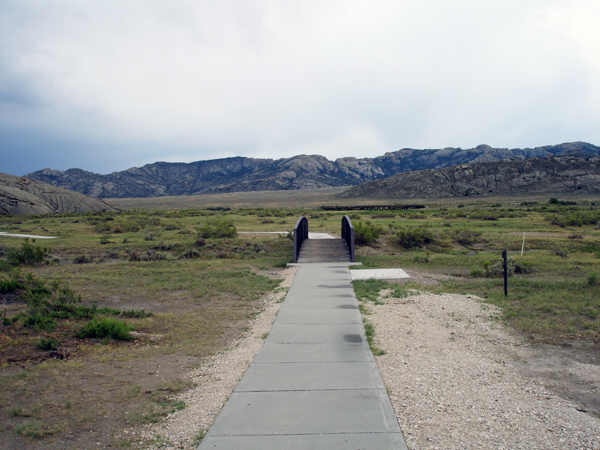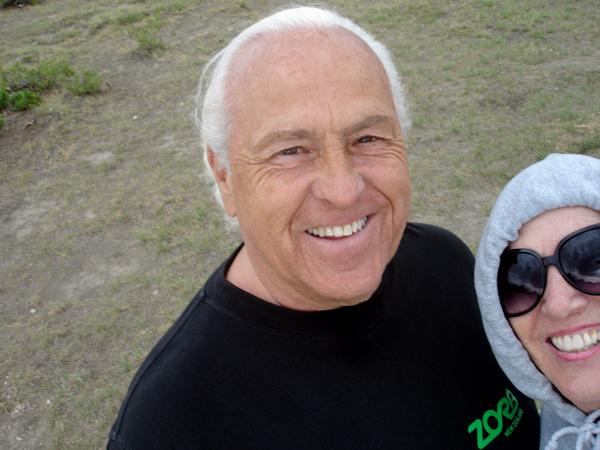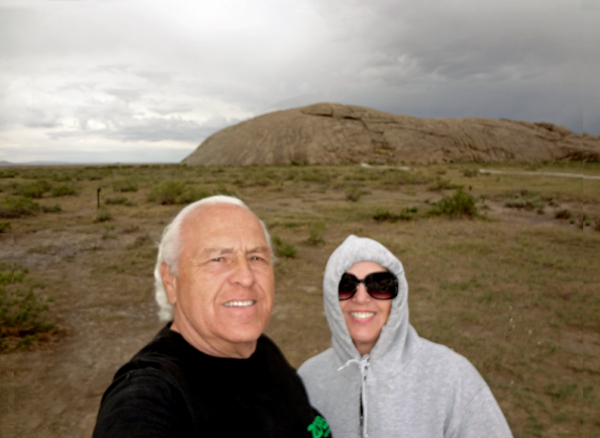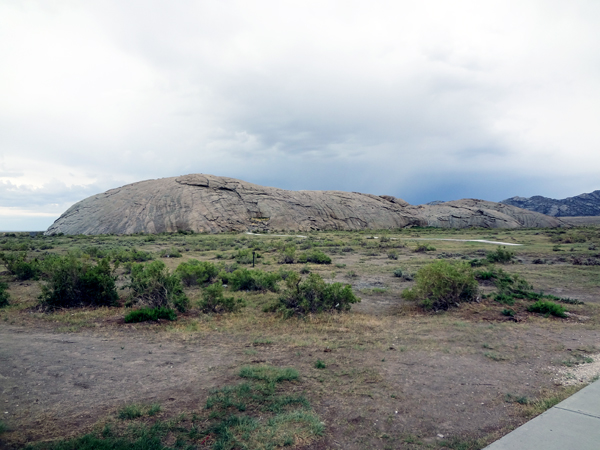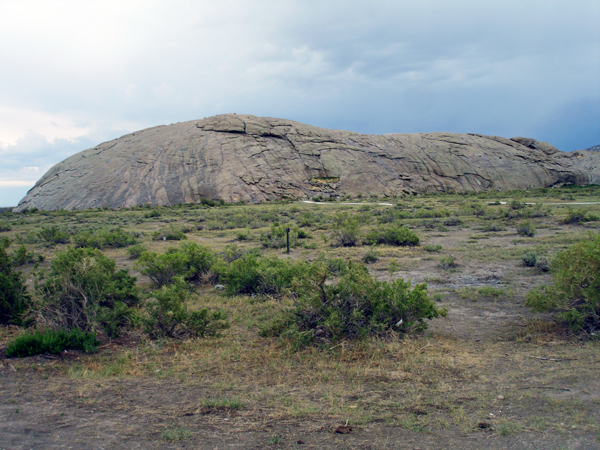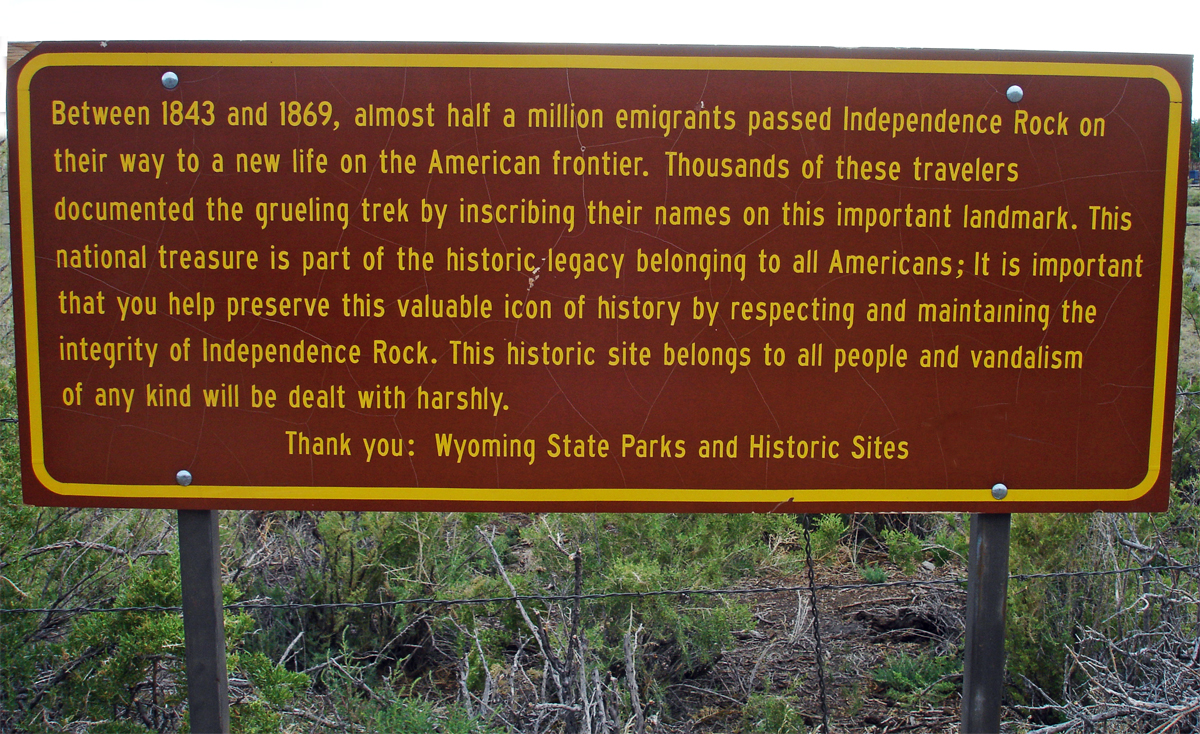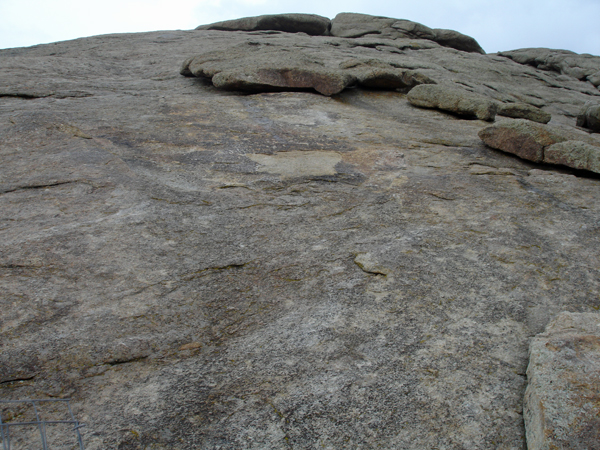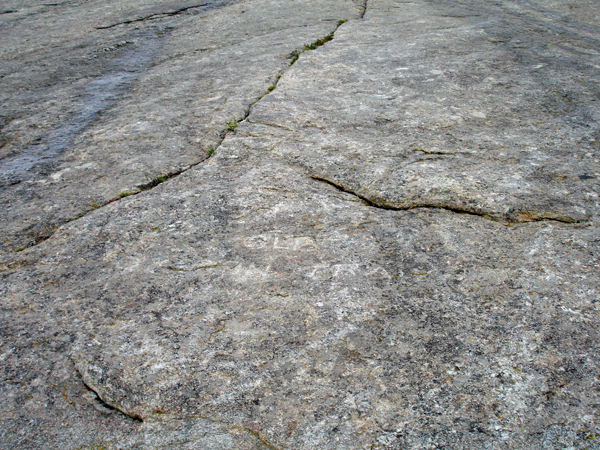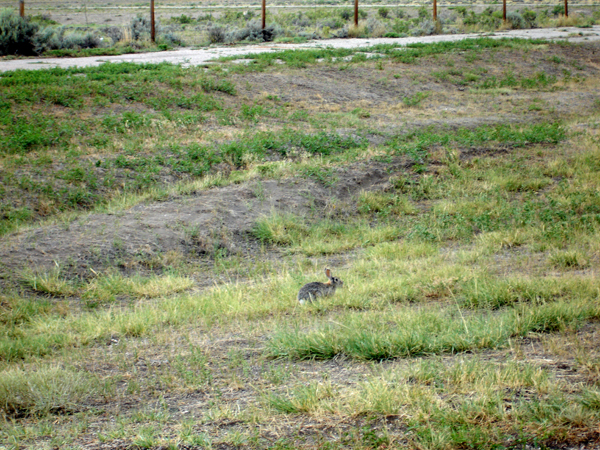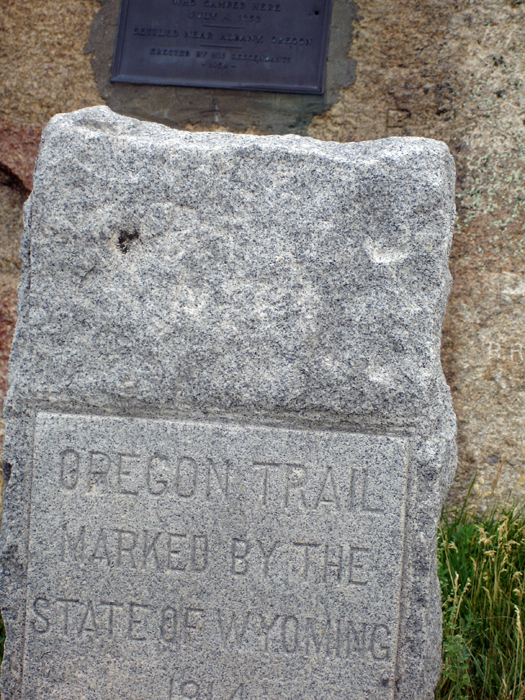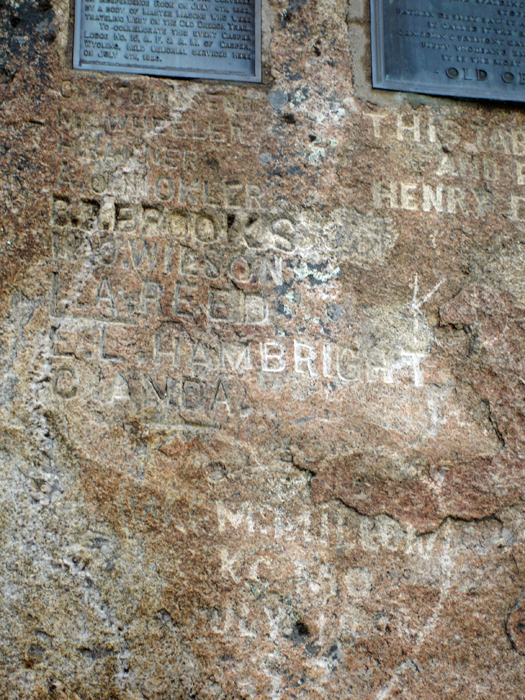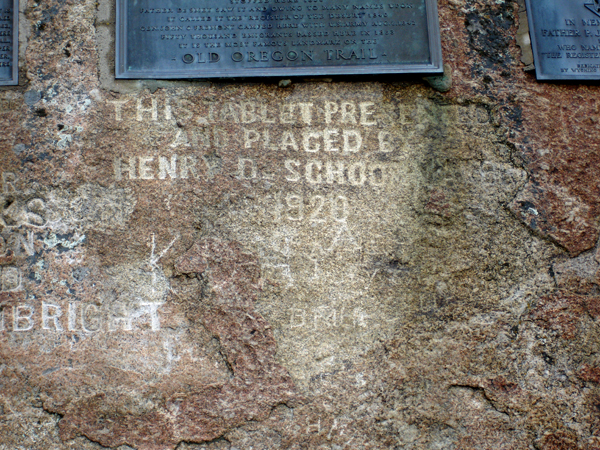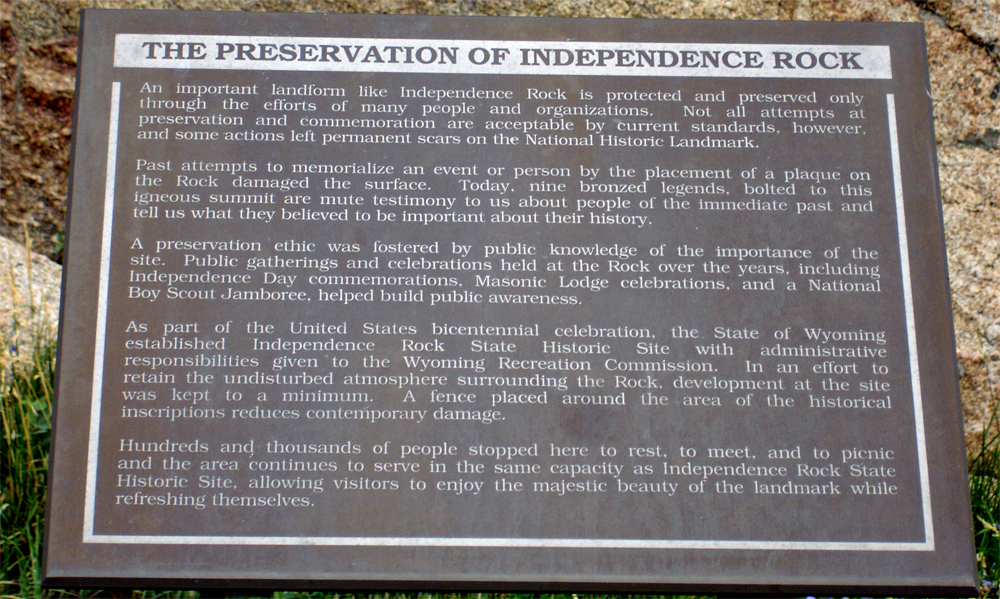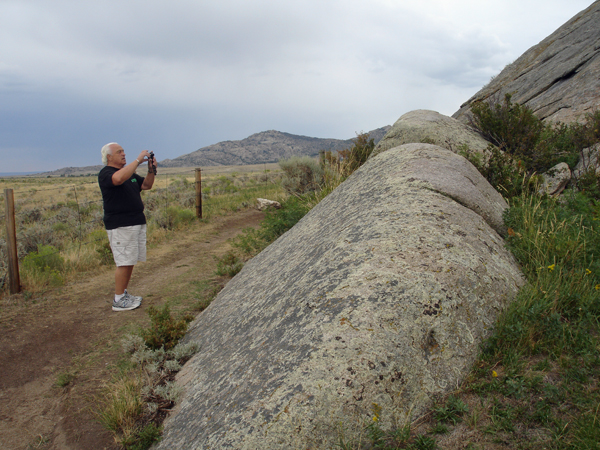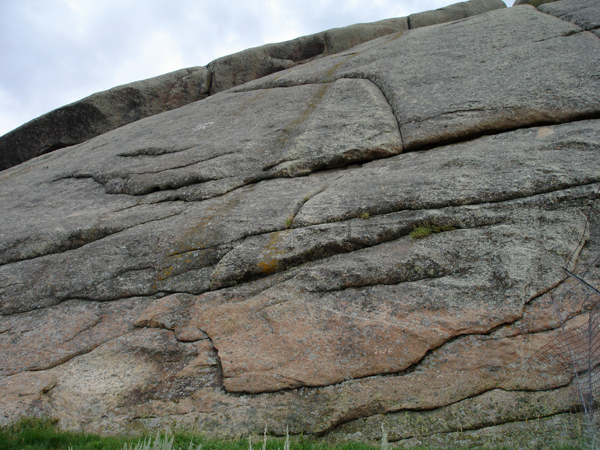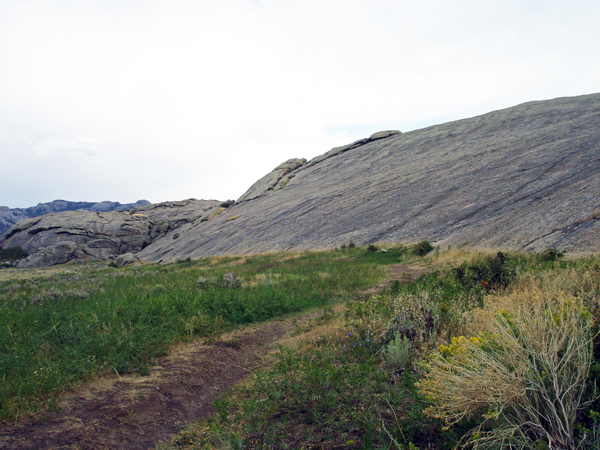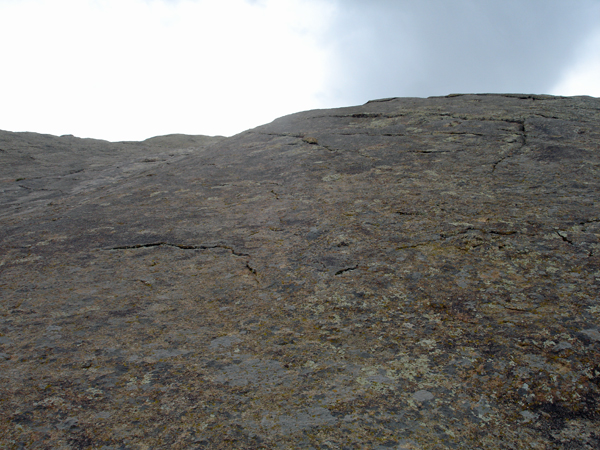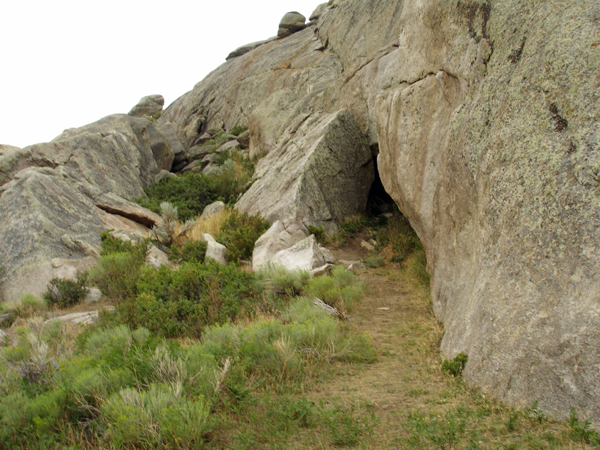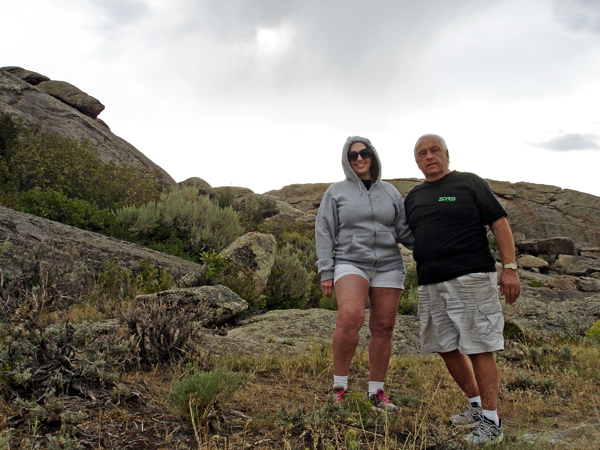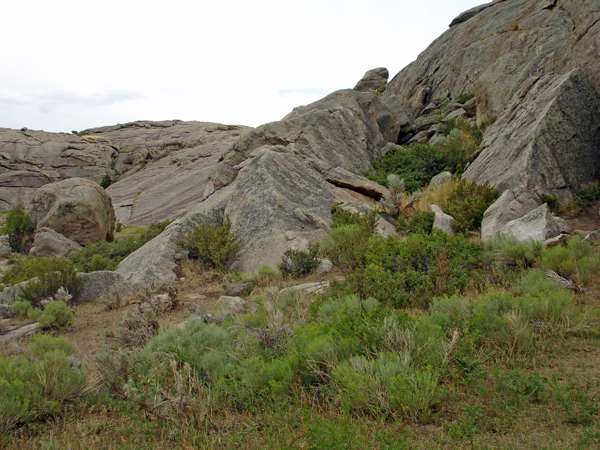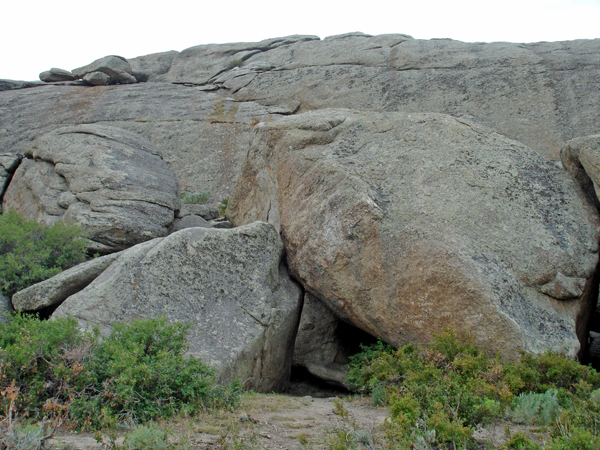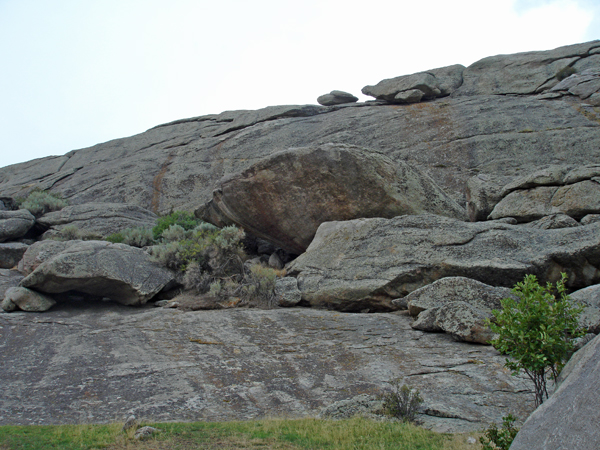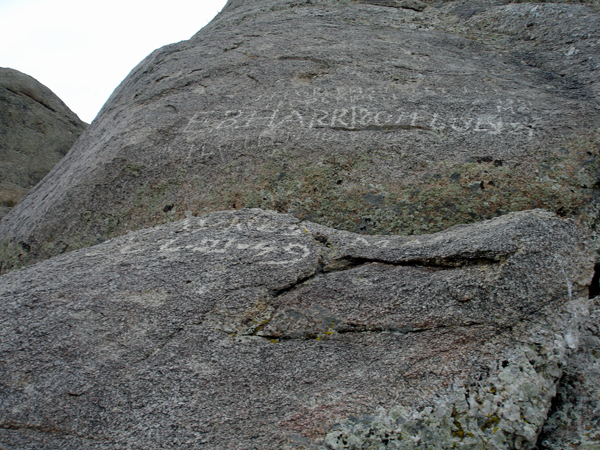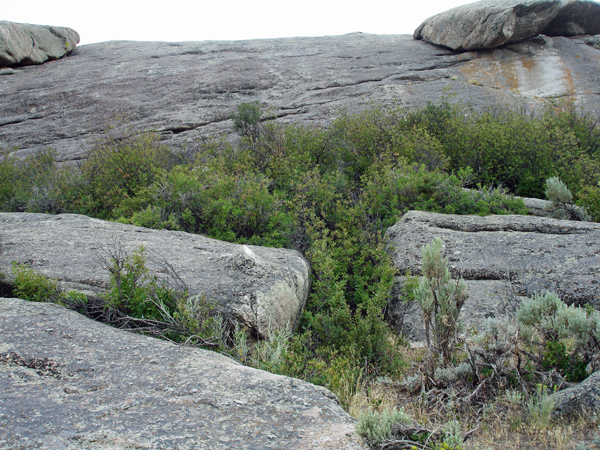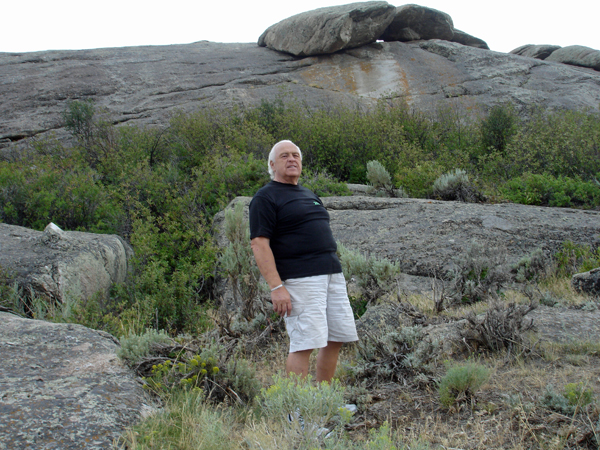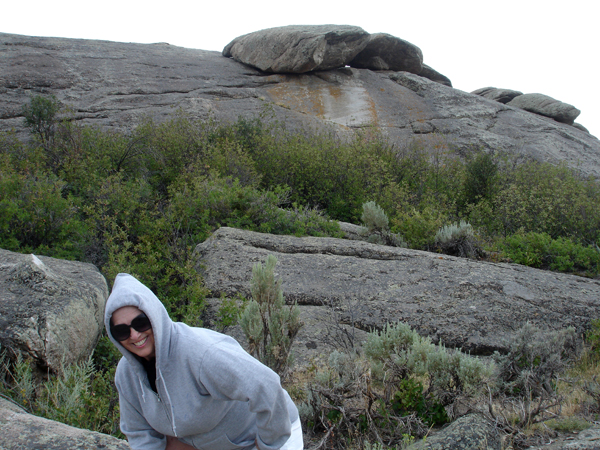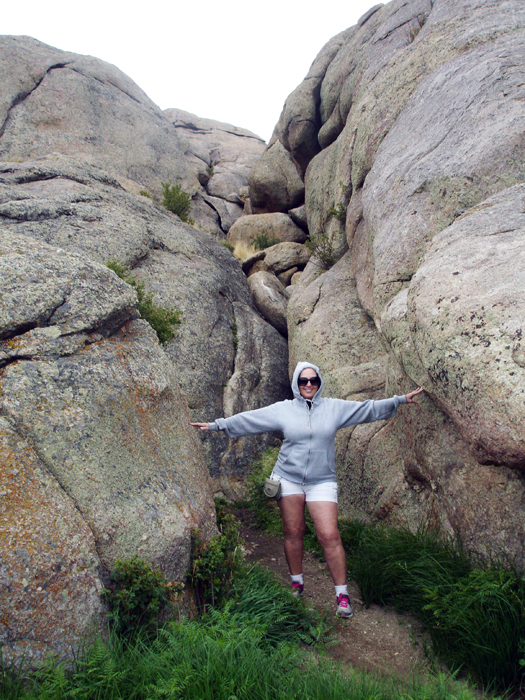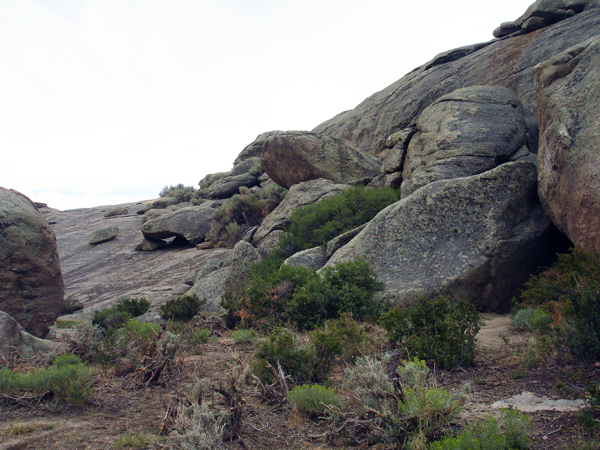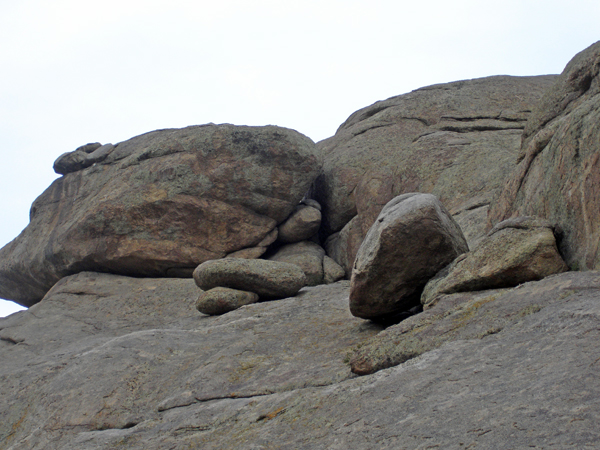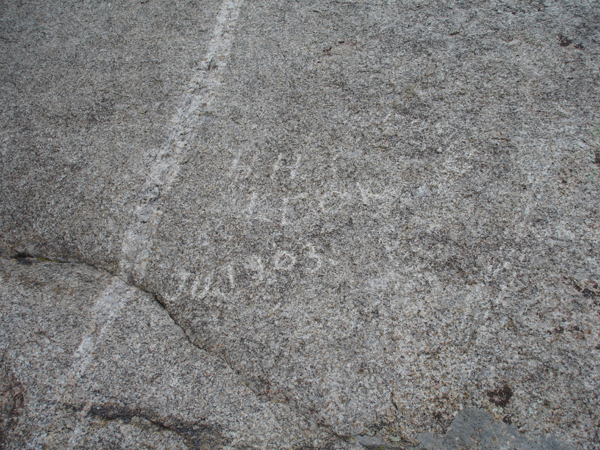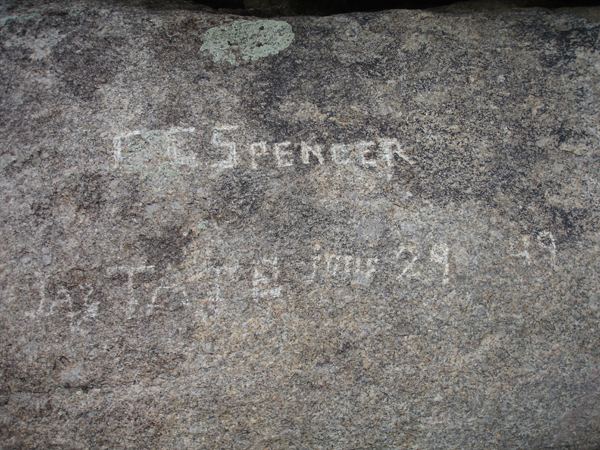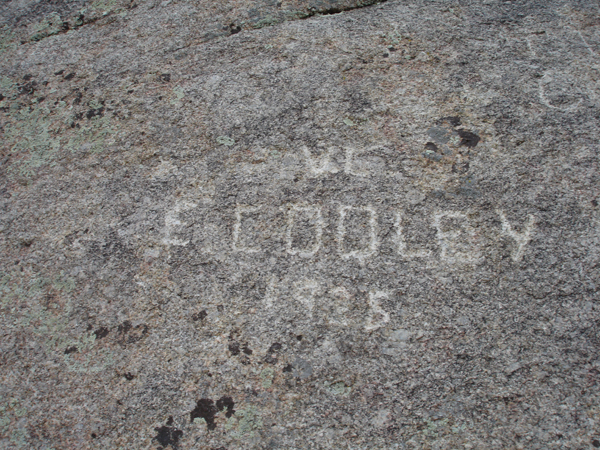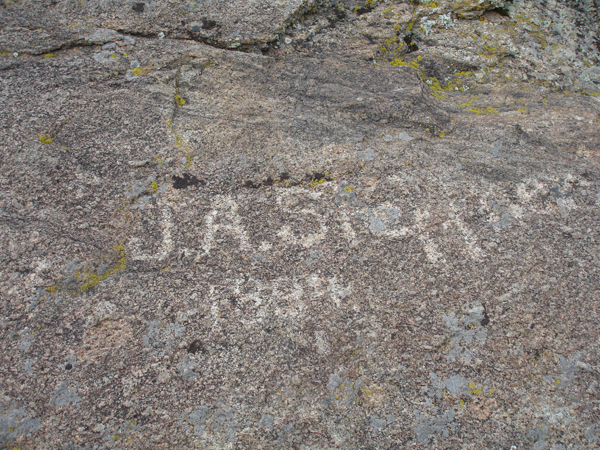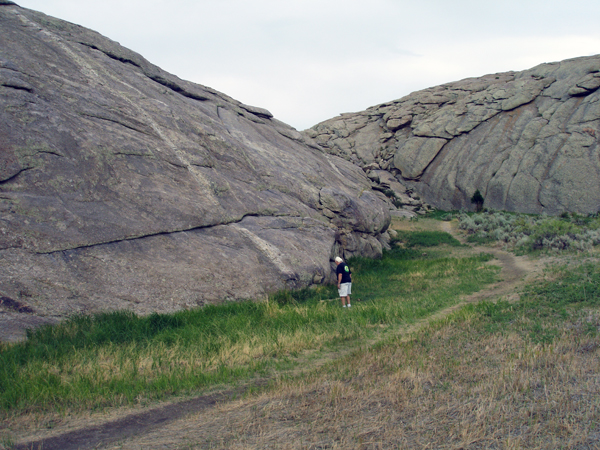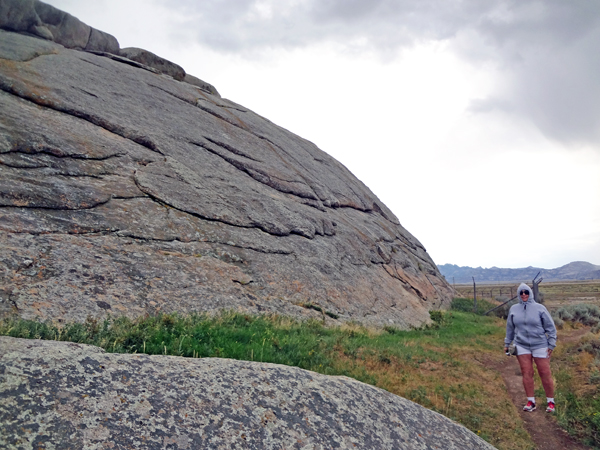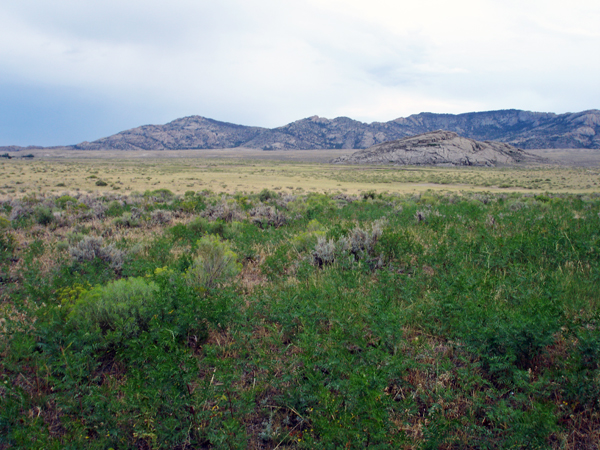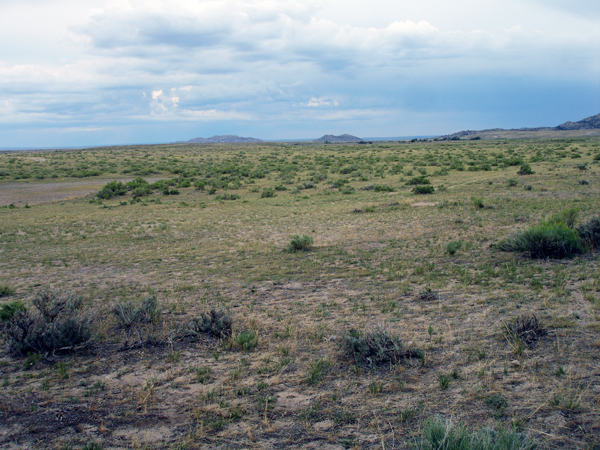|
Independence Rock
is a large rounded monolith of Archean granite typical of the surrounding
region and is an isolated peak at the southeast end of the Granite Mountains.
It stands 6,028 feet above sea level and is approximately 136 feet high,
1,900 feet long and 850 feet wide. The two RV Gypsies walked around
Independence Rock and the distance covered was more than a mile, or
5,900 feet. The mass of Independence Rock is equal to an area of 24.81
acres. It is located in southwestern Natrona County, Wyoming, along
Wyoming Highway 220. |
 During
the middle of the 19th century, the rock was a prominent and well-known
landmark on the Oregon, Mormon and California emigrant trails. Many
of these emigrants carved their names on the rock. The two RV Gypsies
watched for these names as they walked around Independence Rock, and
took some photos of some of the names and they are posted below. During
the middle of the 19th century, the rock was a prominent and well-known
landmark on the Oregon, Mormon and California emigrant trails. Many
of these emigrants carved their names on the rock. The two RV Gypsies
watched for these names as they walked around Independence Rock, and
took some photos of some of the names and they are posted below.
|
Independence Rock was designated
a National Historic Landmark on January 20, 1961. It is now part of
Independence Rock State Historic Site, owned and operated
by the state of Wyoming. |
The rock derives its name
from the fact that it lies directly along the route of the Emigrant
Trail and that emigrant wagon parties bound for Oregon or California,
which usually left the Missouri River in the early spring, attempted
to reach the rock by July 4 (Independence Day in the United States),
in order to reach their destinations before the first mountain snowfalls. |
Everywhere within six or eight
feet of the ground, where the surface was sufficiently smooth, and in
some places sixty or eighty feet above, the rock is inscribed with the
names of travelers. Many names are famous in the history of this country,
and some well-known to science are to be found among those of traders
and travelers. Names were placed on the rock through engraving or by
painting them with wagon grease, tar or a combination of buffalo grease
and glue. Over time, many of these names have flaked off or been obscured
by lichens. Despite this, thousands of names remain.
WATCH FOR THESE NAMES AS YOU SCROLL DOWN TO VIEW THE PHOTOS
BELOW. |
|
|
Below: The two RV Gypsies
tried to take a picture of themselves with Independence Rock in the
background, but this is what they got the first time. The second try
was successful. They do not use a cell phone. They use a real camera
so they can not reverse the camera angle to see themselves as they take
selfies. There was not a single other person around the entire time
that the two RV Gypsies were here. Which has been their experience at
so many places, other than the National Parks, of course. |
|
|
Below: The path to Independence Rock
|
|
|
|
Below: At the end of the pathway
to Independence Rock, there was a closed gate that was not locked. Upon
entering the gate, the two RV Gypsies photographed the sign shown below. |
|
Below: Upon reaching the bottom
of Independence Rock and the path that goes completely around it, the
two RV Gypsies chose to go to the left first. That proved to be the
best way because it was a level path until almost reaching the beginning
again, and then there was a downhill section. If they had gone to the
right first, they would have had an uphill path to struggle with. The
first thing the two RV Gypsies did was to take some close-up photos
to see the writings on the rock. They are hard to see in these photos
though. |
|
|
Below: Just before the two
RV Gypsies rounded the first corner of Independence Rock, they saw a
rabbit hopping quickly away. |
|
Below: Shortly, the two RV
Gypsies came upon a part of Independence Rock that was gated off, so
they took a few pictures through the gate. |
|
|
|
|
Below: The the two RV Gypsies
continued their walk around Independence Rock, taking photos now and
then. The shape and colorations of Independence Rock changed at every
angle. |
|
|
Below: As the two RV Gypsies
walked around Independence Rock they noticed how it looked different
from each angle. |
|
|
|
|
|
|
|
|
|
|
|
|
|
|
|
|
|
|
|
|
Below: Looking away from Independence
Rock, there was open fields, a few more rabbits, and mountains in the
far distance. The two RV Gypsies felt very fortunate to be able to travel
and see such beautiful, calm, amazing sights such as this, especially
on a lovely day when nobody else was around. |
|
|
